Celebrating Courage: 8 Powerful Testimonials of Women's Gynecological Health Triumphs
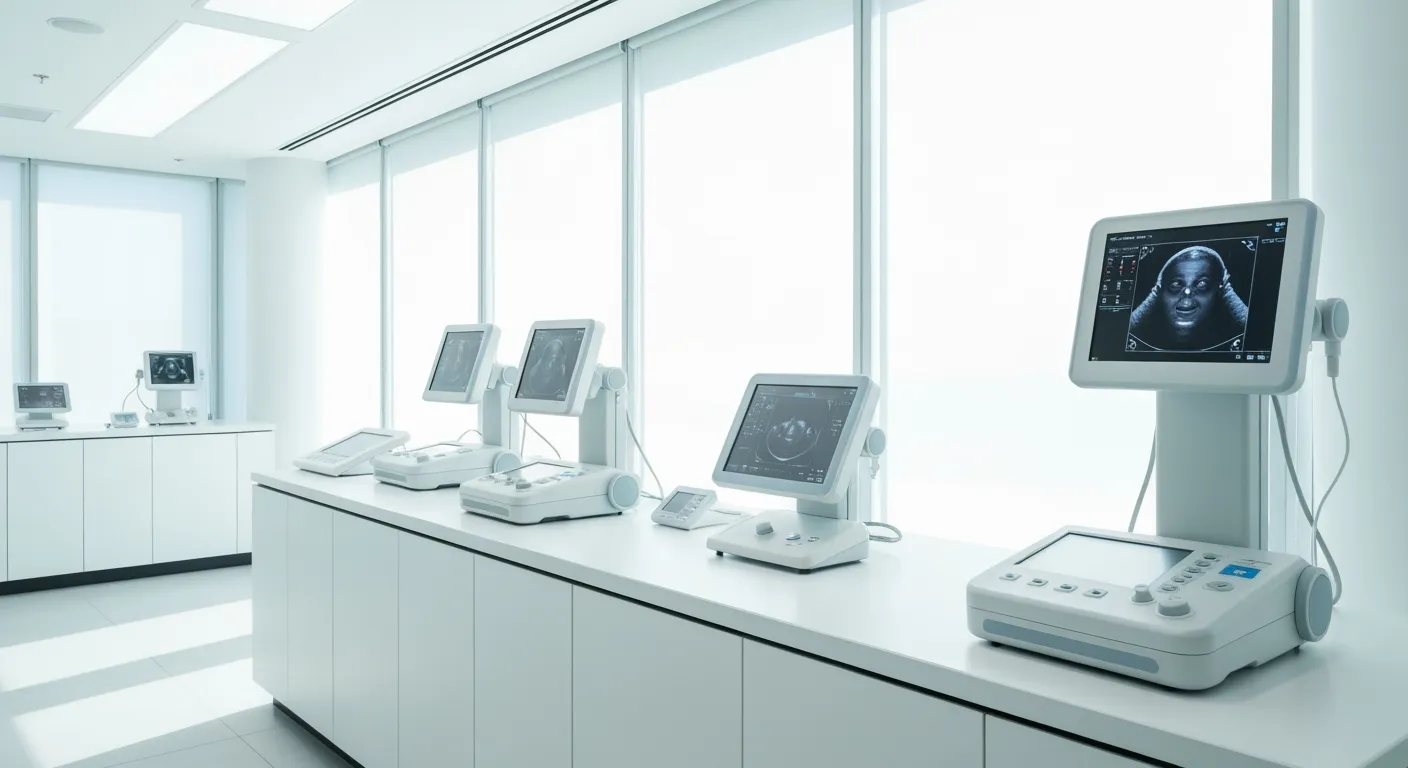
Embracing a New Era in Pregnancy Care
The last decade has witnessed remarkable advancements in pregnancy care, with an increasing focus on remote monitoring technologies for mothers and babies. Continuous home-based monitoring, powered by wearable devices and telehealth applications, is reshaping how prenatal and postpartum care is delivered, improving access, safety, and outcomes. These innovations hold promise not only for low-risk pregnancies but especially for managing high-risk cases and reducing disparities, including in underserved and crisis-affected communities.
Recent Advances and Groundbreaking Research in Remote Pregnancy Monitoring
What are the recent advancements and research developments in remote monitoring technologies for pregnancy care?
Recent progress in remote pregnancy monitoring involves the creation of advanced wearable devices that non-invasively measure key maternal and fetal parameters like heart rate, uterine contractions, fetal movements, and oxygen saturation. Notable FDA-approved devices, such as the INVU belt by Nuvo and the Novii Patch, allow pregnant women to perform self-assessments from home, transmitting data securely to healthcare providers.
Innovative sensors, including soft, stretchable electronics and wireless patches, are designed for continuous, comfortable use during activities such as exercise and showering. These devices have demonstrated high correlation with traditional clinical tools—like cardiotocography (CTG) and ultrasonography—confirming their clinical validity.
Complementing these hardware advances, artificial intelligence (AI) and machine learning algorithms are being integrated to analyze physiological data, enabling early detection of complications such as preeclampsia or fetal distress. These systems support personalized decision-making and reduce unnecessary clinic visits, thus enhancing safety and efficiency. For more details on the integration of AI in pregnancy care, see AI-enabled pregnancy care device.
The COVID-19 pandemic accelerated the adoption of digital maternal health technologies, prompting a surge in telehealth platforms, mobile apps, and remote monitoring solutions that facilitate real-time communication and data sharing between patients and clinicians. Portable, AI-enhanced systems now also include functionalities like fetal heart rate analysis through phonocardiography and ECG, ensuring comprehensive surveillance even in low-resource or remote settings. For further insight into wearable devices for pregnancy health, digital health in pregnancy monitoring, and telehealth for maternal health.
Research supports the effectiveness of these innovations, indicating significant reductions in adverse outcomes—including preeclampsia, neonatal hypoglycemia, and stillbirth—while increasing maternal satisfaction and lowering healthcare costs. These technological breakthroughs are steering prenatal care towards a more patient-centric, accessible, and safer paradigm, ultimately aiming to improve outcomes for both mothers and babies. For comprehensive reviews on remote monitoring benefits and challenges and maternal health remote patient monitoring please refer to these resources.
Wearable Devices Transforming Maternal and Fetal Health Monitoring
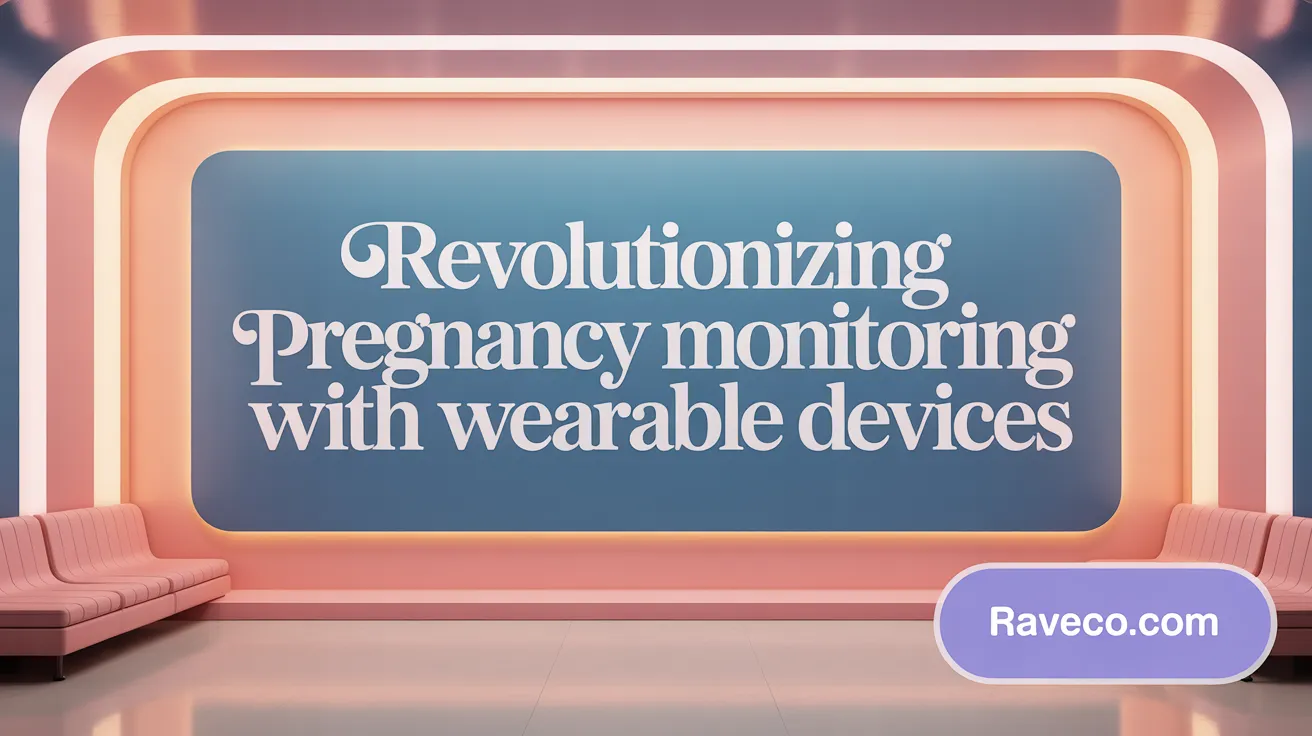
Types of wearable monitoring devices for pregnancy
Various wearable technologies are now being explored to support remote maternal and fetal health monitoring. These include smartwatch-like wristbands, abdominal sensors, sensor belts, bodysuits, electrode patches, and soft electronic devices. For example, fetal ECG patches and wireless abdominal sensors can measure fetal heart rate and uterine contractions, while wrist-worn devices monitor maternal vital signs such as heart rate, blood pressure, sleep, activity, and stress levels. New innovations also feature flexible, battery-free sensors that can be worn during imaging procedures like MRI and X-ray, increasing the comfort and natural movement of pregnant women (Advances in Maternity Technology).
Parameters tracked by wearable sensors
Wearable devices are capable of capturing a broad range of health and physiological parameters. These include maternal vital signs such as heart rate, respiratory rate, blood pressure, oxygen saturation, sleep quality, physical activity, and stress. Fetal health indicators such as fetal heart rate and fetal movement are also monitored in real-time, often through abdominal sensors or fetal ECG patches (Continuous remote home monitoring for maternal health). Some devices extend to measure placental oxygenation and uterine contractions, providing comprehensive data on pregnancy progress. Recent research shows that patterns in heart rate and activity correlate with hormonal changes during pregnancy, enabling potential early detection of complications (Common wearable devices monitoring pregnancy).
Clinical validation and user experience
Studies demonstrate that measurements from wearable sensors show high correlation with standard clinical tools like cardiotocography (CTG) and ultrasonography (The evolution of prenatal monitoring). For instance, high correlation has been observed between wearable device data and traditional fetal and maternal vital signs, confirming their clinical validity. Women report high satisfaction with remote monitoring technologies, appreciating the convenience and reduced need for frequent hospital visits. Despite this, some challenges exist around device comfort, ensuring data security, and maintaining long-term reliability (Continuous remote home monitoring for maternal health). Wearables that operate wirelessly, without wires or belts, are preferred for comfort and movement freedom, further enhancing user experience (Wireless sensors for labor monitoring).
Challenges and future directions for wearable tech
While wearable pregnancy monitoring devices show promising potential, hurdles remain. Data accuracy, security of transmitted health information, user compliance, and device durability are ongoing concerns (Data security in remote health monitoring). As technology advances, future wearable systems should continuously and accurately monitor multiple parameters, including uterine activity and maternal health markers, in real-world environments. Integration with AI and machine learning could improve predictive capabilities for early detection of adverse outcomes (Future of remote monitoring for pregnancy). Expanding validation studies with diverse populations, improving device comfort, and ensuring secure data handling are critical steps towards widespread clinical adoption. Additionally, ensuring equitable access, especially in low-resource settings, remains a priority for maximizing global impact (Technology to Improve Maternal Health).
Innovations in Remote Fetal and Maternal Monitoring Devices
Recent technological advancements have revolutionized remote fetal and maternal health monitoring, offering more flexible, accurate, and user-friendly options for expectant mothers and healthcare providers.
One of the most significant innovations is the development of wireless, waterproof sensors that can replace traditional monitoring belts and wires. Devices such as Philips' Avalon platform and Nuvo's INVU system exemplify this trend. These wearables enable pregnant women to move freely during labor, perform non-stress tests remotely, and transmit real-time data on fetal and maternal well-being directly to clinicians.
Advanced bio-integrated sensor networks like the ANNE (Advanced Neonatal Epidermal Sensor) system further enhance continuous monitoring. This system captures a wide range of vital signs — including fetal heart rate, uterine contractions, maternal temperature, and oxygen saturation — providing a comprehensive picture of pregnancy health. Validated in diverse settings, these sensors demonstrate high accuracy, facilitating early detection of complications such as preeclampsia or fetal distress.
Consumer-grade wearable devices, such as smartwatches and patches, are also being employed to monitor parameters like heart rate, blood pressure, sleep, and activity levels. These devices enable pregnant women to track health data outside the clinical environment, supporting proactive management and engagement.
Integration with electronic health records (EHRs) and telemonitoring platforms has become standard practice, allowing seamless data sharing. This integration supports early intervention, reduces unnecessary hospital visits, and enhances continuous care—especially crucial during the COVID-19 pandemic.
Regulatory agencies like the FDA have granted approvals for various remote monitoring products, recognizing their clinical value. During the pandemic, this recognition accelerated the adoption of wearables and remote sensors, particularly in resource-limited settings where traditional monitoring is challenging.
In summary, innovations in wireless, bio-integrated sensors and consumer wearables are transforming maternal health management. These technologies improve maternal comfort and mobility, enable continuous monitoring, and hold promise for reducing pregnancy complications globally.
Telehealth in Remote Blood Pressure and Maternal-Fetal Health
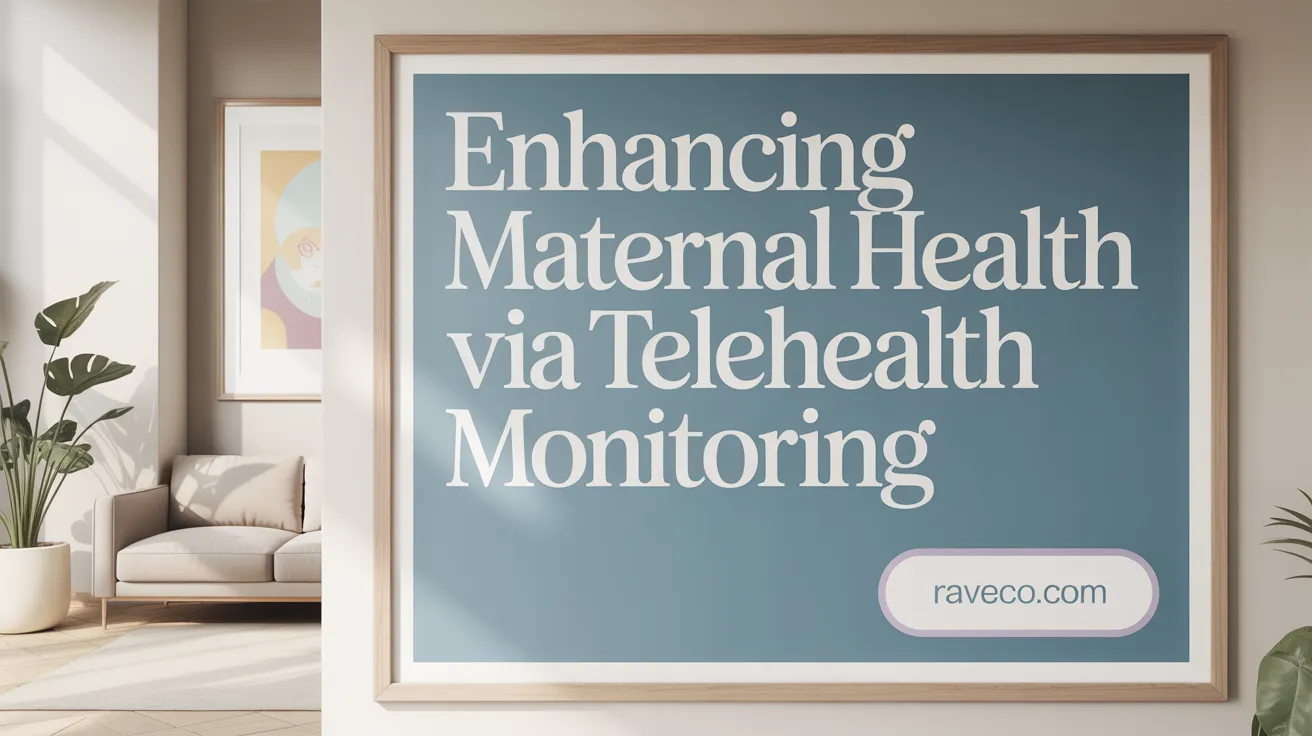
How are telehealth applications used for remote monitoring of blood pressure and fetal and maternal health during pregnancy?
Telehealth applications play a crucial role in monitoring pregnant women remotely, especially for high-risk pregnancies or those in underserved areas. These applications incorporate validated devices such as Bluetooth-enabled blood pressure cuffs and fetal Dopplers, allowing women to regularly measure their vital signs from home. Data from these devices can be transmitted securely to healthcare providers in real-time.
Through virtual consultations, clinicians can review blood pressure readings, fetal heart rates, and other vital parameters without requiring in-person visits. Some systems also support mobile apps that guide women through self-assessment procedures and provide educational resources (mHealth in pregnancy care).
In addition to basic monitoring, innovative platforms like remote fetal monitoring systems enable continuous tracking of fetal wellbeing by capturing fetal heart rate and uterine activity via wearable sensors or devices like FDA-cleared fetal monitors. These technologies are especially beneficial during late pregnancy or when there are concerns about conditions such as preeclampsia, gestational diabetes, or fetal distress.
Protocols established by healthcare teams specify when symptoms or abnormal readings necessitate urgent in-person evaluation. For instance, significantly elevated blood pressure or abnormal fetal heart rate patterns trigger prompt clinical intervention (Telehealth for high-risk pregnancy management).
Overall, telehealth enhances access to comprehensive prenatal care, supports early detection of complications, and reduces the logistical burden on pregnant women, contributing to safer and more personalized pregnancy management (Benefits of RPM in prenatal care).
Strategies and Programs for Managing High-Risk Pregnancies Remotely
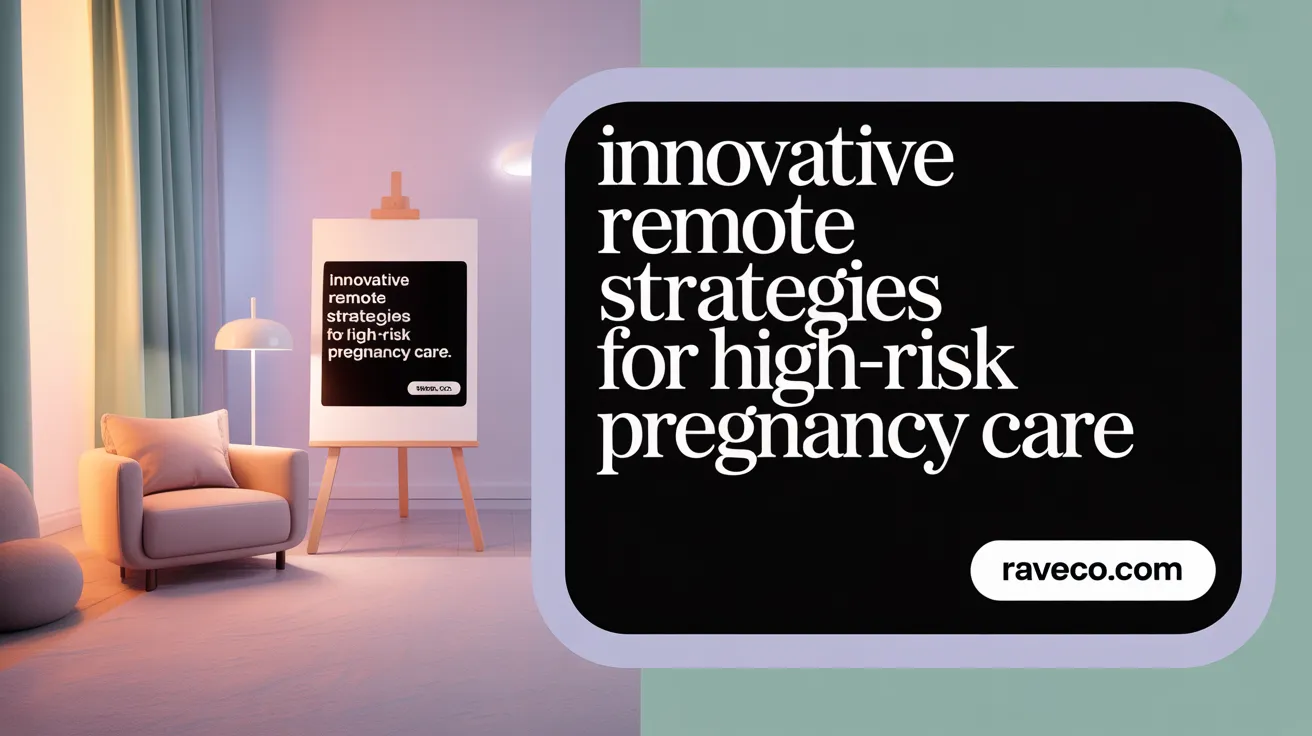
Effective management of high-risk pregnancies through remote care relies on sophisticated strategies that prioritize safety, timely interventions, and comprehensive monitoring.
One of the primary approaches involves remote patient monitoring (RPM), where pregnant women use devices to continuously track vital parameters such as blood pressure, fetal heart rate, glucose levels, and maternal heart rate. These devices transmit data in real-time to healthcare providers, allowing for prompt detection of concerning trends, such as spikes in blood pressure suggestive of preeclampsia or abnormal fetal heart patterns. This approach leverages remote monitoring in obstetric healthcare and remote pregnancy monitoring effectiveness.
Integration of RPM with virtual care teams enhances this process. Care teams, including obstetricians, nurses, dieticians, and maternal-fetal medicine specialists, regularly review incoming data through dedicated platforms or dashboards. This collaborative setup enables proactive management, including scheduling urgent teleconsultations, adjusting medications, or recommending hospital visits when necessary. Such integrated care models are underscored in Innovations in Maternity Care Management and Babyscripts’ maternity care solution.
Protocols are critical in ensuring safety. Clear guidelines specify thresholds for abnormal findings that trigger escalation procedures. For example, consistently elevated blood pressure readings may prompt immediate in-person assessment or hospitalization, while normal variations are managed through routine virtual check-ins. These safety guidelines align with AIM Patient Safety Bundles and telehealth protocols for high-risk pregnancy.
Successful programs often combine structured workflows with educational support, helping pregnant women understand their health status and recognize warning signs. Programs like Philips’ remote maternal monitoring and services such as Babyscripts have demonstrated that rapid response to data alerts can significantly improve outcomes.
Research shows these approaches can reduce adverse perinatal events, shorten the duration of hospital stays, and decrease healthcare costs. Overall, these strategies harness technology and multidisciplinary collaboration to provide safe, accessible, and effective high-risk pregnancy care from a distance.
Digital Health Integration in Prenatal and Postpartum Care
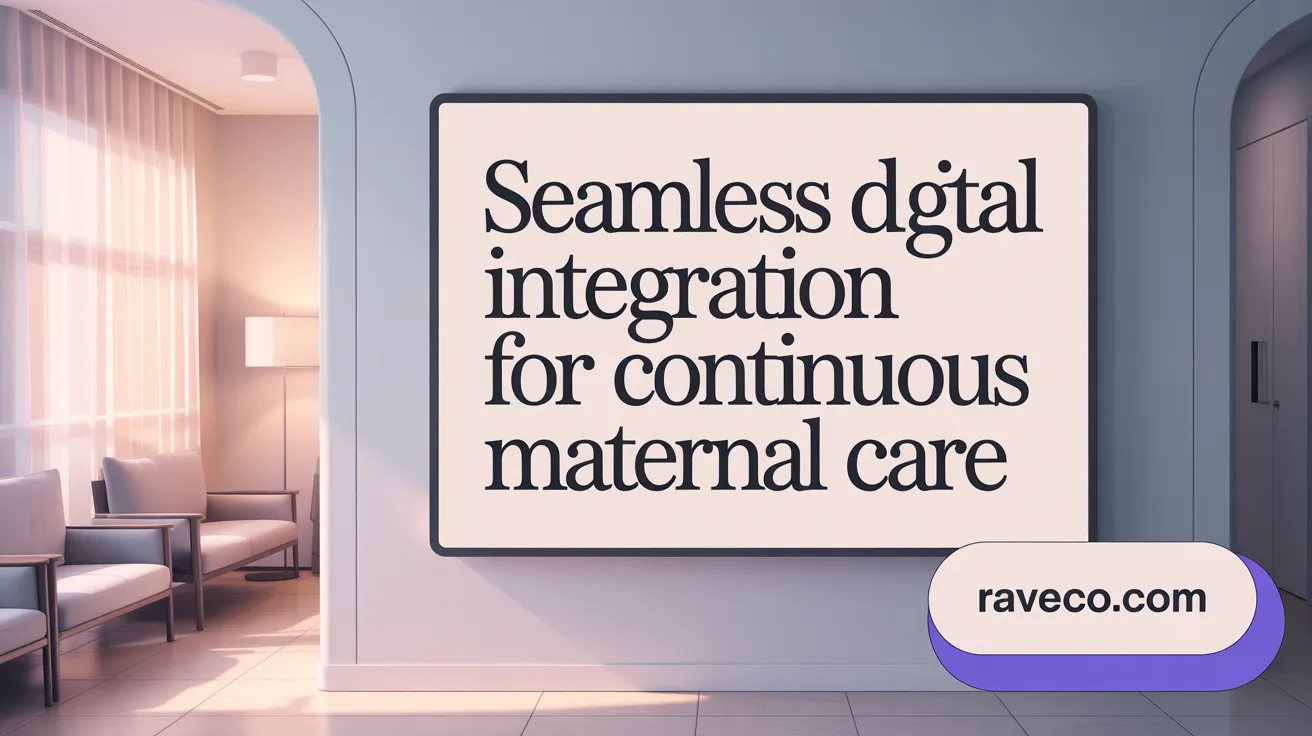
Digital health tools are increasingly shaping the landscape of maternal healthcare by providing innovative ways to monitor, educate, and support women through pregnancy and postpartum periods. These tools include mobile applications, remote monitoring devices, and online platforms that enhance care access and coordination (Technology for New and Expectant Moms, Babyscripts Maternity Care Solution).
Mobile apps and digital platforms serve multiple functions, from tracking vital signs such as blood pressure, blood glucose, and fetal movements to offering personalized health education and behavioral support. For instance, apps like REAN HealthGuru or platforms like Babyscripts facilitate real-time data sharing between mothers and healthcare teams, enabling early detection of complications and improving adherence to care plans (Remote Pregnancy Monitoring, Babyscripts Collaborative Care).
Remote devices, such as wearable sensors and Bluetooth-enabled blood pressure cuffs, empower women to monitor their health from home, reducing the need for frequent clinic visits. Innovative technologies like FDA-cleared fetal monitors, AI-enhanced ultrasound devices, and comprehensive connected care platforms like Bloomlife exemplify efforts to make pregnancy management more continuous and patient-centric (FDA-cleared Remote Fetal Monitoring, AI-enabled Device Revolutionizes Pregnancy Care, Bloomlife Connected Care Platform).
This integration has shown promising results in increasing patient engagement, satisfaction, and adherence to prenatal and postpartum care protocols. For example, remote monitoring programs have reported a 13-day reduction in the time to detect preeclampsia, while patients express high levels of satisfaction with the convenience and confidence these tools foster (Remote Patient Monitoring Benefits in Maternal Health, Babyscripts Maternity Care Solution).
Despite these successes, several challenges remain. Technological barriers, such as limited internet access and digital literacy, particularly in underserved populations, hinder equitable access. Cultural appropriateness and data security concerns, including the need for encrypted transmission and secure data handling, are also critical considerations (Continuous Remote Monitoring and Data Security, Remote Patient Monitoring Data Security). Ongoing policy reforms and reimbursement frameworks are essential to support sustainable integration (Transforming Maternal Health Model, ACOG Telehealth Guidelines). As efforts continue, combining telehealth, AI, and wearable technology represents a promising avenue to deliver safer, more accessible, and equitable prenatal and postpartum care (Future of Remote Monitoring for Pregnancy, Technology to Improve Maternal Health).
Reducing Disparities and Enhancing Outcomes Through Remote Technologies

Innovative approaches to reducing disparities and improving maternal health through remote technologies include the integration of telehealth services such as virtual consultations, remote monitoring, and mobile health (mHealth) applications that facilitate access to prenatal and postpartum care, especially for underserved populations. These strategies are crucial in overcoming geographical barriers, economic obstacles, and systemic inequalities that disproportionately affect marginalized groups.
Programs like the Transforming Maternal Health (TMaH) model emphasize a whole-person, culturally sensitive, and personalized care approach. They leverage remote monitoring tools and expand access to diverse care providers including midwives and community health workers, fostering trust and tailored support.
Digital solutions also incorporate decision-support systems, SMS reminders, and AI-enabled tools which enhance health education, promote adherence to care plans, and facilitate early detection of complications. Such innovations ensure that high-risk groups receive timely interventions, thereby improving outcomes.
Efforts to bridge digital divides focus on expanding broadband infrastructure and addressing social determinants of health such as education and socioeconomic status. Removing technological barriers ensures equitable access to remote healthcare tools.
By harnessing these remote strategies, healthcare systems can effectively bridge gaps—geographical, socioeconomic, and racial—leading to improved maternal outcomes, reduced disparities, and greater health equity.
Remote monitoring technologies are proving vital in crisis, humanitarian, or underserved settings. They enable real-time collection of vital health data, allowing healthcare providers to monitor pregnant women remotely, detect early warning signs of complications such as preeclampsia or fetal distress, and manage chronic conditions without the need for frequent in-person visits.
These tools are particularly impactful during emergencies, conflicts, or natural disasters when healthcare infrastructure may be compromised. They empower patients by providing health information and fostering self-management, which is essential where healthcare access is limited.
Despite challenges related to data security, infrastructure, and costs, ongoing innovations—such as wireless sensors, AI analytics, and simplified devices—hold promise to expand quality care to marginalized and hard-to-reach populations.
Looking forward, research continues on integrating advanced sensors, genomic data, and AI to predict pregnancy complications early and personalize interventions. The expansion of telehealth, especially accelerated during the COVID-19 pandemic, is expected to improve access, engagement, and outcomes.
Altogether, these technological advances are reshaping maternal healthcare, making it more inclusive, accessible, and effective, and thus helping to close the gap in maternal health disparities across diverse populations.
Looking Ahead: The Future of Maternal and Fetal Remote Care
Innovations in remote monitoring technologies for pregnancy are transforming maternal and fetal care by enhancing access, safety, and personalized management. Wearable devices and telehealth platforms are bridging gaps for high-risk pregnancies and underserved populations while offering continuous, accurate data to clinicians and empowering mothers. As integration with AI and digital health tools deepens, we anticipate even more precise, tailored interventions that improve outcomes and reduce disparities globally. Embracing these technologies promises a future where comprehensive pregnancy care is accessible from any location, improving the health of mothers and babies worldwide.





.png)